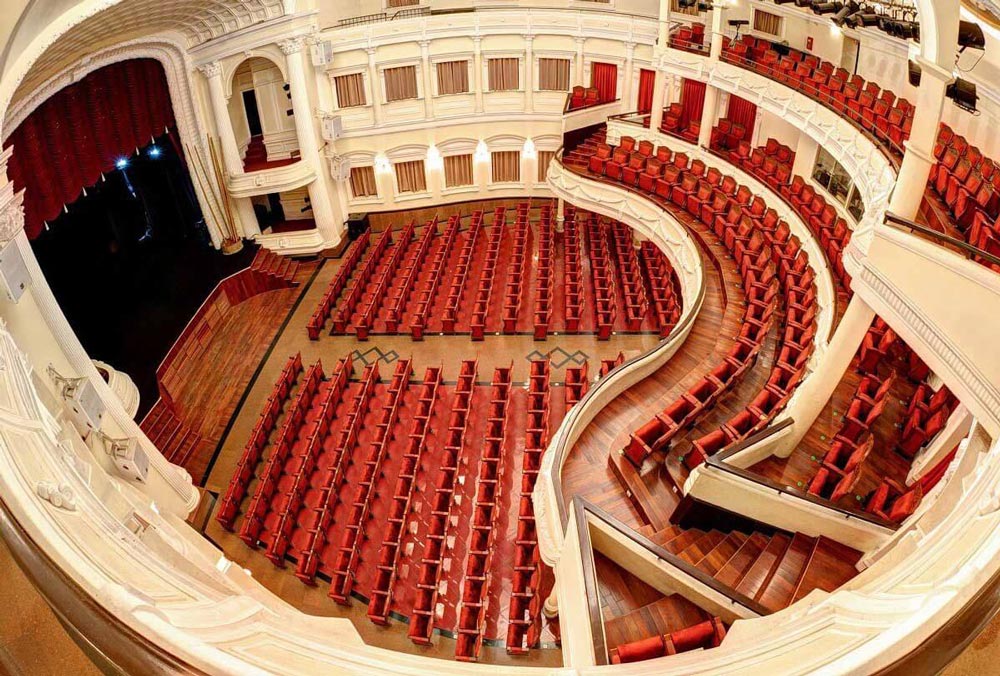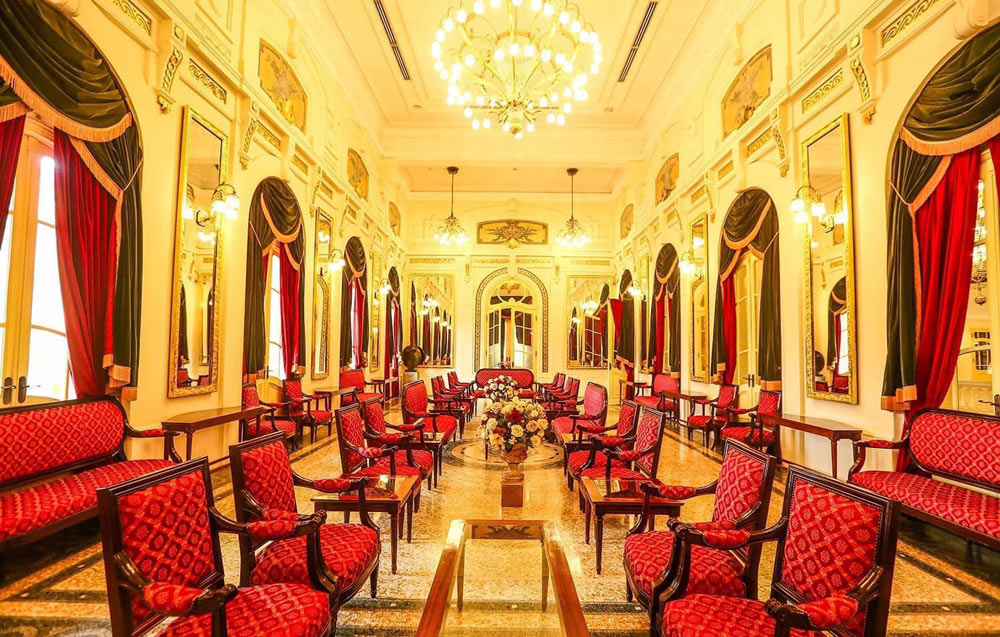Standing proudly in the heart of Hanoi's French Quarter, a magnificent edifice whispers tales of a bygone era, its elegant facade a testament to French colonial architecture and a symbol of Vietnam's rich cultural heritage. This is the Hanoi Opera House, a landmark that has graced the city since 1911, its stage hosting countless performances and witnessing pivotal moments in the nation's history. Located just a stone's throw from the picturesque Hoan Kiem Lake, the Hanoi Opera House is more than just a beautiful building; it's a living, breathing center for the performing arts, a place where opera, ballet, drama, and symphony concerts come alive. Whether you're an architecture enthusiast, a history buff, or a lover of the arts, the Hanoi Opera House offers a captivating experience. This comprehensive guide will delve into the fascinating history of this iconic structure, explore its architectural highlights, provide up-to-date information on performances and tickets, and offer practical tips for planning your visit. Prepare to be transported to a world of elegance and artistry as we uncover the secrets of the Hanoi Opera House.
The Hanoi Opera House stands as a majestic landmark in Vietnam's capital, renowned not only for its beauty but also for its rich history and cultural significance. But why is the Opera House famous? Its fame rests upon its status as an architectural masterpiece, its pivotal role in the nation's history, and its enduring legacy as a vibrant center for the arts.
The Hanoi Opera House is a stunning example of French neoclassical architecture, a testament to the French colonial influence on the city's landscape.
The Hanoi Opera House history is interwoven with the story of Vietnam's colonial past and its journey to independence.
The Hanoi Opera House represents a fascinating blend of French and Vietnamese cultural influences. It stands as a reminder of the city's colonial past while simultaneously embodying its embrace of both Western and traditional Vietnamese art forms.
The question "What is the Kiel Opera House called now?" seems to be a bit of a misunderstanding. The Kiel Opera House is a distinct building located in Kiel, Germany, and has no direct connection to the Hanoi Opera House. The Kiel Opera House, also known as Theater Kiel, is still in operation under that name. The Hanoi Opera House is a separate and unique landmark in Vietnam, with its own distinct history and architectural style. Therefore, the two should not be confused.
Beyond its stunning architecture and historical significance, the Hanoi Opera House offers a vibrant cultural experience through its diverse performances and insightful tours.
You might be wondering, "Does Vietnam have opera?" The answer is a resounding yes! While Vietnam is known for its traditional art forms, it also boasts a growing opera scene, with the Hanoi Opera House serving as a major hub for both local and international productions. The Vietnam National Opera and Ballet (VNOB), based in Hanoi, is a key performing company, staging both Western classics and Vietnamese operas that showcase the country's unique musical heritage.
The Hanoi Opera House hosts a diverse range of performances throughout the year, catering to a variety of artistic tastes:
Notable productions in recent years have included a Vietnamese adaptation of "Swan Lake" and performances by renowned international artists.
Securing Hanoi Opera House tickets is generally straightforward.
Purchasing Options:
Booking in Advance: It's highly recommended to book Hanoi Opera House tickets in advance, especially for popular performances or during peak tourist season, as shows can sell out.
The Hanoi Opera House tickets price can vary significantly depending on the type of performance, the seating category, and the specific production.
For those interested in exploring the building's architecture and history beyond attending a performance, Hanoi Opera House tours are available.
Understanding the Hanoi Opera House timings is crucial for planning your visit.
Whether you choose to attend a performance or take a guided tour, experiencing the Hanoi Opera House is a memorable way to connect with Hanoi's rich cultural scene and appreciate the beauty of this historic landmark.

With its grand architecture and rich history, the Hanoi Opera House is undoubtedly a significant landmark. But with so many things to see and do in Hanoi, you might be wondering, "Is Hanoi Opera House worth visiting?" The answer depends on your interests and what you're hoping to get out of your experience.
If you have an appreciation for architecture, then the Hanoi Opera House is a must-see. Its stunning French neoclassical design, inspired by the Palais Garnier in Paris, is a visual masterpiece. The building's facade, with its intricate details, columns, and balconies, is a photographer's dream. Even if you don't attend a performance, simply admiring the building from the outside is worthwhile. A guided tour will allow you to appreciate the interior's architectural details even more.
For those who love opera, ballet, classical music, or theatre, attending a performance at the Hanoi Opera House is a truly special experience. The opportunity to witness high-quality productions by the Vietnam National Opera and Ballet or other renowned companies within this historic venue adds another layer of enjoyment. The acoustics of the auditorium are excellent, and the atmosphere is undeniably grand. It's a chance to dress up a little and enjoy a sophisticated evening out in Hanoi.
The Hanoi Opera House is more than just a pretty building; it's a tangible link to Hanoi's past. A visit, whether for a performance or a tour, offers insights into the city's French colonial history and its cultural evolution. You can imagine the elegant gatherings of the colonial elite who once frequented the opera house and reflect on how the building has been repurposed and embraced by the Vietnamese people after independence. It's a place where you can connect with the city's complex and fascinating history.
While the Hanoi Opera House has much to offer, there are a few things to keep in mind:
So, is Hanoi Opera House worth visiting? If you're an architecture enthusiast, a lover of the performing arts, or someone interested in history, then the answer is a definite yes. The Hanoi Opera House offers a unique blend of beauty, history, and cultural significance that's hard to find elsewhere. Even if you don't attend a performance, admiring the building from the outside and taking a guided tour can be a rewarding experience. However, if you're on a very tight budget or have limited interest in architecture or the performing arts, you might choose to prioritize other attractions in Hanoi. Ultimately, the decision comes down to your personal interests and how much value you place on experiencing this iconic landmark. For many visitors, the Hanoi Opera House is a highlight of their trip, a place where they can connect with the city's past and appreciate its vibrant cultural scene.

To ensure your visit to the Hanoi Opera House is as memorable as possible, here are a few insider tips to help you plan and prepare:
Before your trip, it's a good idea to check the Hanoi Opera House's official website or other reliable sources (such as the Vietnam National Opera and Ballet's website) for their upcoming performance schedule. This will allow you to see if any performances coincide with your travel dates and help you plan your itinerary accordingly. You might even discover a performance that piques your interest, adding another dimension to your Hanoi experience.
If you've set your sights on a particular performance, especially a popular opera, ballet, or concert, it's highly recommended to book your tickets in advance. This is particularly important during peak tourist season or if you're traveling during a major holiday. Booking ahead ensures you secure your preferred seats and avoid the disappointment of a sold-out show. You can often book tickets online through the official website or various ticketing platforms.
While the Hanoi Opera House doesn't enforce a super strict dress code, it's always a good idea to dress respectfully when attending a performance.
Arriving early, particularly if you are attending a show, allows you to fully appreciate the grandeur of the Hanoi Opera House without rushing.
If you're interested in learning more about the Hanoi Opera House's history, architecture, and inner workings, consider taking a guided tour.
The Hanoi Opera House is conveniently located in the French Quarter, making it easy to combine your visit with other nearby attractions.
By following these tips, you can plan a memorable and enriching visit to the Hanoi Opera House, appreciating its beauty, history, and cultural significance to the fullest.
The Hanoi Opera House stands as a magnificent symbol of Hanoi's rich history, a testament to its colonial past, and a vibrant hub for its thriving arts scene. Its elegant French neoclassical architecture, coupled with its significant role in Vietnam's cultural evolution, makes it a truly captivating landmark. Whether you're a seasoned opera-goer, an architecture enthusiast, or simply curious to explore Hanoi's iconic sites, the Hanoi Opera House offers a memorable experience. We encourage you to witness its grandeur firsthand, whether by attending a performance that transports you to another world, taking a guided tour that unveils its hidden stories, or simply admiring its breathtaking exterior from the square.
To elevate your Hanoi journey and ensure it's crafted precisely to your desires, consider the expertise of Asia Mystika. We specialize in creating tailor-made experiences that transcend ordinary itineraries, revealing the true soul of Vietnam through the eyes of our local experts. With Asia Mystika, you can explore with confidence, knowing that every detail is meticulously planned by a trustworthy team, dedicated to providing enriching and unforgettable moments. And our commitment to value for money ensures that your investment unlocks an extraordinary adventure that resonates long after you've returned home.
Ready to be captivated by the Hanoi Opera House and uncover the many other treasures of Vietnam? Explore our inspiring range of Vietnam tour packages and let us help you create a personalized journey that will exceed your expectations. We invite you to share your own Hanoi Opera House experiences, reflections, or any questions you may have in the comments below. Let your adventure in Vietnam begin!

